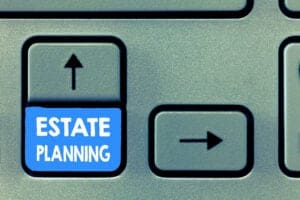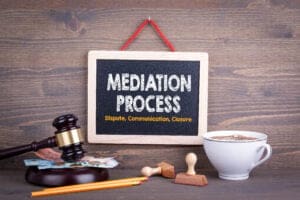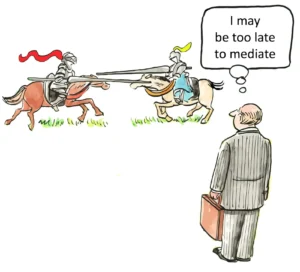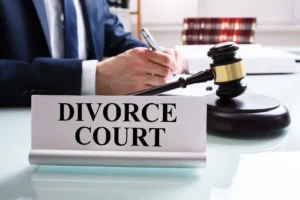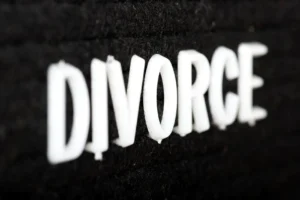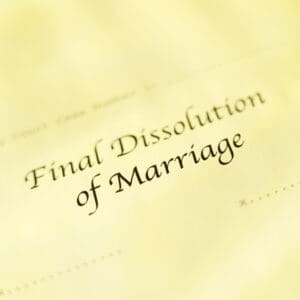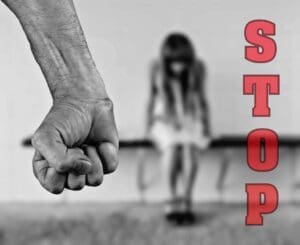6 Ways an Expert Lawyer Can Beat Your Drug Case
How do premises liability claims protect visitors on private and public property? Premises liability claims establish a vital legal framework that protects millions of Americans who enter both private and public spaces daily. These claims ensure property owners maintain safe environments and provide fair compensation when dangerous conditions cause injuries to lawful visitors. Under premises liability law, property owners bear responsibility for maintaining reasonably safe conditions and addressing hazards that could harm visitors, customers, tenants, and even certain trespassers.
Property owners across the United States face significant legal obligations under these laws, with premises liability cases comprising 11 percent of all civil litigation that reaches trial. The financial stakes remain substantial, as victims receive approximately $4 billion annually in compensation nationwide, with individual settlements ranging from $75,000 for moderate injuries to over $2.3 million for catastrophic cases. California slip-and-fall statutes exemplify how state-specific regulations create additional layers of protection, requiring property owners to meet heightened standards for visitor safety.
What Should I Know About Premises Liability Claims?
Premises liability law creates a comprehensive system of protection based on the fundamental principle that property owners owe visitors a duty of care. This legal responsibility requires owners to maintain safe conditions, conduct regular inspections, address known hazards, and warn visitors of dangers that might not be immediately apparent. The foundation of these claims rests on four essential elements that victims must establish: duty of care, breach of that duty, causation linking the breach to injuries, and actual damages.
Property owners cannot simply ignore hazardous conditions on their premises. The law recognizes different categories of visitors, each receiving varying levels of protection based on their legal status when entering the property. Invitees, such as customers in stores or clients visiting offices, receive the highest level of protection. Property owners must actively inspect their premises, identify potential hazards, and take reasonable steps to eliminate dangers or provide adequate warnings.
Licensees occupy a middle ground in legal protection. These visitors, including social guests and certain service providers, enter property with the owner’s permission but primarily for their own benefit. Property owners must warn licensees of known hazards but generally have no duty to inspect the premises specifically for their protection.
Even trespassers receive some legal protection, particularly children who may be attracted to dangerous conditions. The attractive nuisance doctrine recognizes that property owners bear special responsibilities when hazardous conditions might lure children who cannot appreciate the associated risks.
The legal landscape surrounding premises liability continues evolving, with courts increasingly adopting broader theories of liability. Recent trends show expanded interpretations of foreseeability and duty of care, sometimes holding property owners responsible for incidents occurring in areas they do not directly control, such as adjacent parking lots or sidewalks.
How Does Premises Liability Law Vary by State?
State variations in premises liability law create a complex legal patchwork that significantly affects claim outcomes. While all states recognize the basic premise that property owners owe visitors a duty of care, the specific standards and applications differ substantially across jurisdictions. Some states follow a “reasonable care” standard, expecting property owners to exercise ordinary care to prevent foreseeable harm. Others impose a “higher duty” standard, placing greater responsibility on owners, particularly regarding known dangers.
Comparative fault rules represent one of the most significant areas of state-by-state variation. States following pure comparative fault systems allow injured parties to recover damages even when partially at fault for their accidents. For example, if a visitor bears 30 percent responsibility for their slip-and-fall incident, they can still recover 70 percent of their total damages. Modified comparative fault systems, used in other states, bar recovery entirely if the injured party’s fault exceeds a certain threshold, typically 50 or 51 percent.
Notice requirements also vary dramatically between states. Some jurisdictions require “actual notice,” meaning property owners must have direct knowledge of hazardous conditions before liability attaches. Others recognize “constructive notice,” holding owners responsible for hazards they should have discovered through reasonable inspection procedures. New York premises liability law exemplifies strict notice requirements, demanding that plaintiffs prove either that property owners created the hazardous condition, had actual notice of the danger, or that the condition existed long enough that reasonable property owners should have discovered it.
Statute of limitations periods create another crucial state-specific consideration. Most states impose a two to three-year deadline for filing premises liability lawsuits, measured from the date of injury. However, specific circumstances can alter these timeframes. Government entities often enjoy shorter filing deadlines, and wrongful death cases may have different limitations periods than personal injury claims.
Georgia and Pennsylvania have emerged as particularly plaintiff-friendly jurisdictions, with courts showing willingness to expand premises liability theories. These states increasingly hold property owners accountable for third-party criminal acts and accidents in peripheral areas, reflecting a judicial trend toward broader community responsibility concepts.
When Can a Property Owner Be Held Responsible?
Property owner liability depends on several interconnected factors that courts evaluate to determine whether negligence occurred. Duty of care represents the foundational element, requiring property owners to maintain reasonably safe conditions for lawful visitors. This duty varies based on the visitor’s legal status, with the highest obligations owed to business invitees and the lowest to trespassers.
Breach of duty occurs when property owners fail to meet their reasonable care obligations. Common examples include allowing spills to remain on floors without cleanup or warning signs, failing to repair broken handrails or steps, inadequate lighting in parking areas, or ignoring known hazards that could cause injuries. Property owners cannot claim ignorance when hazardous conditions exist for extended periods, as they bear responsibility for reasonable inspection schedules.
Constructive notice plays a crucial role in establishing liability. Even when property owners lack direct knowledge of specific hazards, they may be held responsible if dangerous conditions existed long enough that reasonable inspection procedures should have identified them. Courts examine factors such as the location of the hazard, typical traffic patterns, and the property owner’s maintenance practices when determining whether constructive notice applies.
Foreseeability represents another critical consideration in premises liability cases. Property owners must anticipate reasonably foreseeable risks and take appropriate precautions. This principle extends beyond obvious physical hazards to include negligent security situations where property owners may be liable for third-party criminal acts when such crimes were reasonably predictable.
Negligent security claims require proof that property owners knew or should have known about the potential for criminal activity on their premises. Factors courts consider include the property’s location in high-crime areas, history of previous incidents, adequacy of lighting and security measures, and industry standards for similar properties. Shopping centers, apartment complexes, hotels, and parking facilities face particular scrutiny regarding their security measures.
The attractive nuisance doctrine creates special liability rules for child trespassers. Property owners may be held responsible for injuries to children who are attracted to dangerous artificial conditions such as swimming pools, construction equipment, or abandoned structures. This doctrine requires proof that the hazard was likely to attract children, posed unreasonable risks that children could not appreciate, and that the burden of eliminating the danger was slight compared to the risk involved.
How Do Comparative Fault Rules Affect Your Claim?
Comparative fault principles significantly impact premises liability claim outcomes by allocating responsibility between property owners and injured parties. These rules recognize that accidents often result from multiple contributing factors, including the injured person’s own actions or negligence. Understanding how comparative fault operates in your jurisdiction can dramatically affect both the likelihood of recovery and the amount of compensation awarded.
Pure comparative fault systems, used in states like California and New York, allow injured parties to recover damages regardless of their percentage of fault. For instance, if a slip-and-fall victim bears 40 percent responsibility for their accident due to inattention while texting, they can still recover 60 percent of their total damages. This approach ensures that some compensation remains available even when victims share substantial responsibility for their injuries.
Modified comparative fault systems, employed by many states, create fault thresholds that can bar recovery entirely. Under the 50 percent rule, injured parties cannot recover damages if their fault equals or exceeds 50 percent of the total responsibility. The 51 percent rule bars recovery only when the injured party bears greater responsibility than all other parties combined. These thresholds create critical strategic considerations for both plaintiffs and defendants in premises liability cases.
Assumption of risk represents a related but distinct defense that property owners may assert. This doctrine applies when injured parties voluntarily expose themselves to known dangers inherent in particular activities. Courts distinguish between primary assumption of risk, which bars recovery entirely, and secondary assumption of risk, which reduces damages based on comparative fault principles. For example, a person who chooses to walk across an obviously icy parking lot might be found to have assumed the inherent risk of slipping.
The open and obvious doctrine provides another avenue for reducing or eliminating property owner liability. Under this defense, property owners argue that hazardous conditions were so apparent that reasonable persons would have noticed and avoided them. However, modern courts increasingly treat this as a comparative fault issue rather than a complete bar to recovery, recognizing that obvious dangers do not always absolve property owners of all responsibility
Evidence plays a crucial role in comparative fault determinations. Photographic evidence showing the accident scene, surveillance footage capturing the incident, and witness statements describing the injured party’s actions all influence fault allocation. Property owners may present evidence of the victim’s distraction, intoxication, inappropriate footwear, or failure to heed warning signs to establish comparative fault defenses.
What Evidence Proves Negligence in a Premises Liability Case?
Successful premises liability claims require compelling evidence demonstrating property owner negligence and the direct link between hazardous conditions and resulting injuries. Photographic evidence serves as the cornerstone of most premises liability cases, providing clear visual documentation of dangerous conditions at the time of the accident. Time-stamped photographs capturing multiple angles of hazards, surrounding environmental factors, and the absence of warning signs create powerful evidence that can withstand challenges from property owners.
Surveillance footage offers particularly valuable evidence when available. Video recordings provide objective, unfiltered accounts of incidents that eliminate disputes about how accidents occurred. Importantly, surveillance cameras may capture the hazardous condition’s existence for extended periods before the accident, establishing constructive notice and undermining property owner claims of recent hazard creation.
Incident reports created by property managers, store employees, or security personnel provide official acknowledgments of accidents and immediate responses. These reports often contain crucial details about environmental conditions, witness information, and any immediate remedial actions taken. Requesting copies of incident reports immediately after accidents ensures important documentation remains available for later use.
Medical records establish both the extent of injuries and their direct relationship to the premises liability incident. Comprehensive medical documentation supports damage claims and provides expert medical opinions linking specific injuries to the accident circumstances. Emergency room records, diagnostic test results, treatment summaries, and rehabilitation reports all contribute to proving the scope of harm suffered.
Maintenance records reveal property owner practices regarding safety inspections, hazard identification, and corrective actions. Regular maintenance logs demonstrating systematic property care can support property owner defenses, while gaps in maintenance or ignored hazards strengthen negligence claims. Building code compliance records, safety inspection reports, and contractor work orders provide additional insight into property conditions.
Witness statements from individuals who observed the accident or can testify about hazardous conditions provide crucial corroboration. Witness testimony helps establish the timeline of events, environmental factors, and the reasonableness of the injured party’s actions. Expert witnesses, including safety consultants, building inspectors, and accident reconstruction specialists, provide authoritative opinions about industry standards and liability issues.
Historical complaint records demonstrate property owner knowledge of recurring problems. Documentation of previous accidents, customer complaints, or maintenance requests regarding similar hazards establishes patterns of negligence and contradicts claims of isolated incidents. Building management correspondence, insurance claims, and regulatory violation notices all contribute to proving systematic safety failures.
How Do Commercial and Residential Claims Differ?
Commercial property premises liability cases typically involve higher stakes and more complex legal standards than residential claims. Commercial property owners generally owe visitors a higher duty of care due to increased foot traffic, business invitations to enter premises, and greater resources available for safety measures. Retail establishments, restaurants, hotels, and office buildings must maintain stricter safety standards and conduct more frequent inspections than typical residential properties.
Business invitees receive the strongest legal protections under premises liability law. Commercial property owners must actively inspect their premises for hazards, promptly address dangerous conditions, and provide adequate warnings about risks that cannot be immediately eliminated. This heightened duty reflects the mutually beneficial relationship between businesses and their customers, where commercial enterprises profit from visitor presence.
Commercial liability insurance requirements often exceed residential coverage limits, reflecting the increased exposure these properties face. Business owners typically carry general liability policies with higher coverage limits and may purchase additional umbrella policies for catastrophic claims. These insurance considerations influence settlement negotiations and damage awards in commercial premises liability cases.
Regulatory compliance creates additional layers of responsibility for commercial properties. The Americans with Disabilities Act mandates accessibility standards for public accommodations, while Occupational Safety and Health Administration regulations establish workplace safety requirements. Building codes, fire safety regulations, and industry-specific standards all create potential liability sources when violations contribute to visitor injuries.
Residential premises liability cases often involve more limited resources and different relationship dynamics. Homeowners typically owe duties primarily to social guests and service providers rather than business invitees. However, landlords managing rental properties face obligations similar to commercial property owners regarding common areas, structural maintenance, and tenant safety.
The attractive nuisance doctrine more frequently applies to residential properties with features like swimming pools, trampolines, or playground equipment. Homeowners must take reasonable precautions to prevent child injuries from dangerous conditions that might attract neighborhood children onto their property.
Damage awards in commercial premises liability cases often exceed residential claim settlements. Commercial property accidents may involve higher medical expenses, greater lost wages, and more substantial pain and suffering awards. The perceived deeper pockets of commercial defendants and their insurance carriers also influence jury verdict amounts.
Settlement statistics reveal significant differences between commercial and residential premises liability outcomes. Commercial property cases average higher settlements, with retail establishments paying median jury verdicts of $1.7 million and hotels averaging $1 million in jury awards. Residential cases typically involve smaller damage awards, though catastrophic injuries can produce substantial settlements regardless of property type.
What Defenses Do Property Owners Commonly Raise?
Property owners deploy several well-established defenses to minimize or eliminate liability in premises liability cases. Lack of notice represents the most common defense strategy, with property owners arguing they had no actual or constructive knowledge of hazardous conditions. Successful notice defenses require proof that hazards developed suddenly without reasonable opportunity for discovery through normal inspection procedures.
The open and obvious doctrine provides another frequently used defense. Property owners contend that hazardous conditions were so apparent that reasonable persons would have noticed and avoided them. Courts increasingly treat this as a comparative fault issue rather than a complete liability bar, recognizing that obvious dangers do not always excuse property owner negligence entirely.
Assumption of risk defenses apply when injured parties voluntarily encounter known dangers. Property owners must prove that visitors had actual knowledge of specific risks and voluntarily chose to proceed despite understanding the potential consequences. This defense requires more than general awareness of possible dangers; it demands proof of specific risk appreciation and conscious acceptance.
Comparative negligence arguments seek to reduce liability by establishing injured party fault. Common comparative fault allegations include visitor inattention, inappropriate footwear, ignoring warning signs, or engaging in unreasonable conduct that contributed to accidents. Even partial comparative fault can significantly reduce damage awards in most jurisdictions.
Statute of limitations defenses bar claims filed beyond applicable deadlines. Property owners carefully track filing deadlines and may seek dismissal of untimely lawsuits. However, discovery rules, continuing treatment doctrines, and other exceptions can extend limitation periods under certain circumstances.
Trespasser status defenses attempt to minimize duty of care obligations. Property owners argue that injured parties lacked permission to enter premises and therefore deserve minimal legal protection. However, the attractive nuisance doctrine and other exceptions can create liability even for trespasser injuries under specific circumstances.
Independent contractor liability transfers seek to shift responsibility to third parties. Property owners may argue that maintenance contractors, security companies, or other service providers bear primary responsibility for creating or failing to address hazardous conditions.
Sovereign immunity protections shield government entities from certain premises liability claims. Public property owners often enjoy special legal protections that private property owners lack, though exceptions exist for proprietary functions and gross negligence situations.
Successfully defending premises liability claims requires comprehensive documentation of safety practices, prompt hazard remediation, and thorough investigation of accident circumstances. Property owners benefit from maintaining detailed maintenance logs, conducting regular safety inspections, and preserving evidence immediately following incidents on their premises.
How Can Visitors Maximize Compensation Without Legal Advice?
Understanding the full scope of available damages helps premises liability victims pursue fair compensation for their losses. Medical expenses represent the most straightforward damage category, including emergency treatment, hospitalization, surgery, medications, and rehabilitation services. Both current and future medical costs may be recoverable, requiring careful documentation and expert medical testimony to establish ongoing treatment needs.
Lost wages compensation extends beyond immediate income loss to include diminished future earning capacity. Victims must document their employment history, current income, and how injuries affect their ability to perform job duties. Professional economists may provide testimony regarding lifetime earning loss calculations for permanent disabilities.
Pain and suffering damages acknowledge the intangible impacts of premises liability injuries. These non-economic damages compensate for physical pain, emotional distress, loss of enjoyment of life, and relationship impacts. Pain and suffering awards often represent the largest component of premises liability settlements, particularly for serious injuries with lasting effects.
Property damage claims cover personal belongings destroyed or damaged during accidents. Clothing, electronic devices, jewelry, and other items may be compensable if their damage directly resulted from the premises liability incident. Documentation of original value and replacement costs supports these claims.
Home modification expenses become necessary when permanent disabilities require accessibility improvements. Wheelchair ramps, bathroom modifications, stair lifts, and other adaptive equipment may be recoverable as part of premises liability settlements.
Prompt action preserves evidence and strengthens claims. Taking photographs of accident scenes, collecting witness information, and seeking immediate medical attention all contribute to successful outcomes. Maintaining detailed records of medical treatment, lost work time, and ongoing symptoms provides essential documentation for damage calculations.
Understanding comparative fault implications helps victims avoid actions that might reduce their compensation. Being attentive to surroundings, following posted warnings, and acting reasonably all minimize potential fault allegations that could decrease damage awards.
Statute of limitations compliance requires timely legal action. Most states impose two to three-year deadlines for filing premises liability lawsuits, with specific rules varying by jurisdiction. Government entities often have shorter notice requirements and filing deadlines that demand immediate attention.
Settlement negotiations benefit from comprehensive damage documentation and understanding of similar case outcomes. Insurance companies typically offer settlements based on medical expenses, lost wages, and comparable verdicts for similar injuries. Armed with accurate damage calculations and local verdict information, victims can better evaluate settlement offers.
The legal principle that property owners bear primary responsibility for maintaining safe premises supports victim compensation rights. Premises liability claims serve essential public policy goals by encouraging property safety and providing fair compensation when negligence causes harm. This framework protects individual rights while respecting property owner interests in maintaining reasonable liability standards.
Conclusion
Premises liability claims represent a fundamental component of American tort law that balances property rights with visitor safety obligations. These legal protections ensure that millions of people who enter private and public properties receive appropriate safeguards against hazardous conditions. Property owners across all sectors bear significant responsibilities for maintaining safe environments, conducting reasonable inspections, and addressing known dangers that could harm lawful visitors.
The evolution of premises liability law reflects society’s commitment to protecting vulnerable individuals while respecting legitimate property interests. From the attractive nuisance doctrine that protects children to negligent security principles that address foreseeable crimes, these legal frameworks adapt to changing social needs and emerging safety challenges. Comparative fault rules provide balanced approaches to shared responsibility, ensuring that compensation remains available while acknowledging that accidents often result from multiple contributing factors.
State-by-state variations in premises liability law underscore the importance of understanding local legal standards and procedural requirements. Whether dealing with California slip-and-fall statutes or New York premises liability law, victims and property owners must navigate complex regulatory environments that can significantly impact case outcomes. The substantial financial stakes involved, with billions in annual compensation awarded to victims, reflect both the frequency of these incidents and society’s commitment to fair compensation for negligence-related injuries.
Looking forward, premises liability law will continue evolving to address emerging challenges in property safety, security technology, and changing social expectations. Property owners who proactively address safety concerns, maintain comprehensive insurance coverage, and understand their legal obligations position themselves to minimize liability exposure while contributing to overall public safety. For visitors who suffer injuries due to negligent property conditions, understanding available legal protections and compensation opportunities ensures access to justice and fair recovery for their losses.
Sources:
- American Bar Association Premises Liability Guidelines
- National Safety Council Slip and Fall Statistics
- U.S. Department of Justice Bureau of Justice Statistics Civil Justice Survey
- Cornell Law School Legal Information Institute Premises Liability
- Restatement (Second) of Torts Section 343A Property Owners Duties
- National Floor Safety Institute Premises Liability Research
- Federal Trade Commission Property Safety Guidelines
- Americans with Disabilities Act Accessibility Requirements
- Smith Dollar Law Blog: Understanding Premises Liability & Responsibility
- Walker Injury Law: What Property Owners Need To Know


